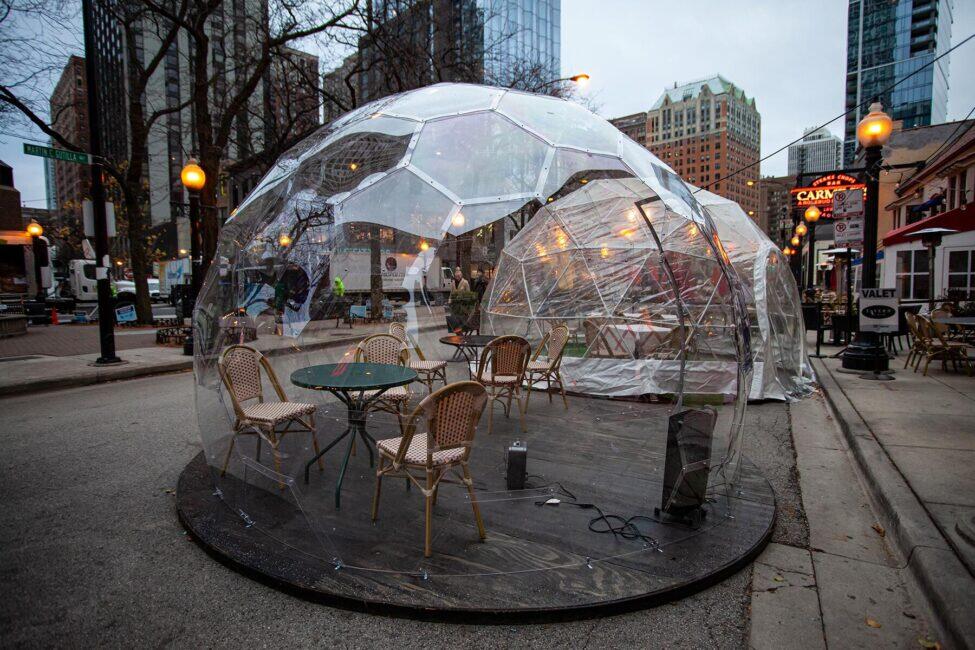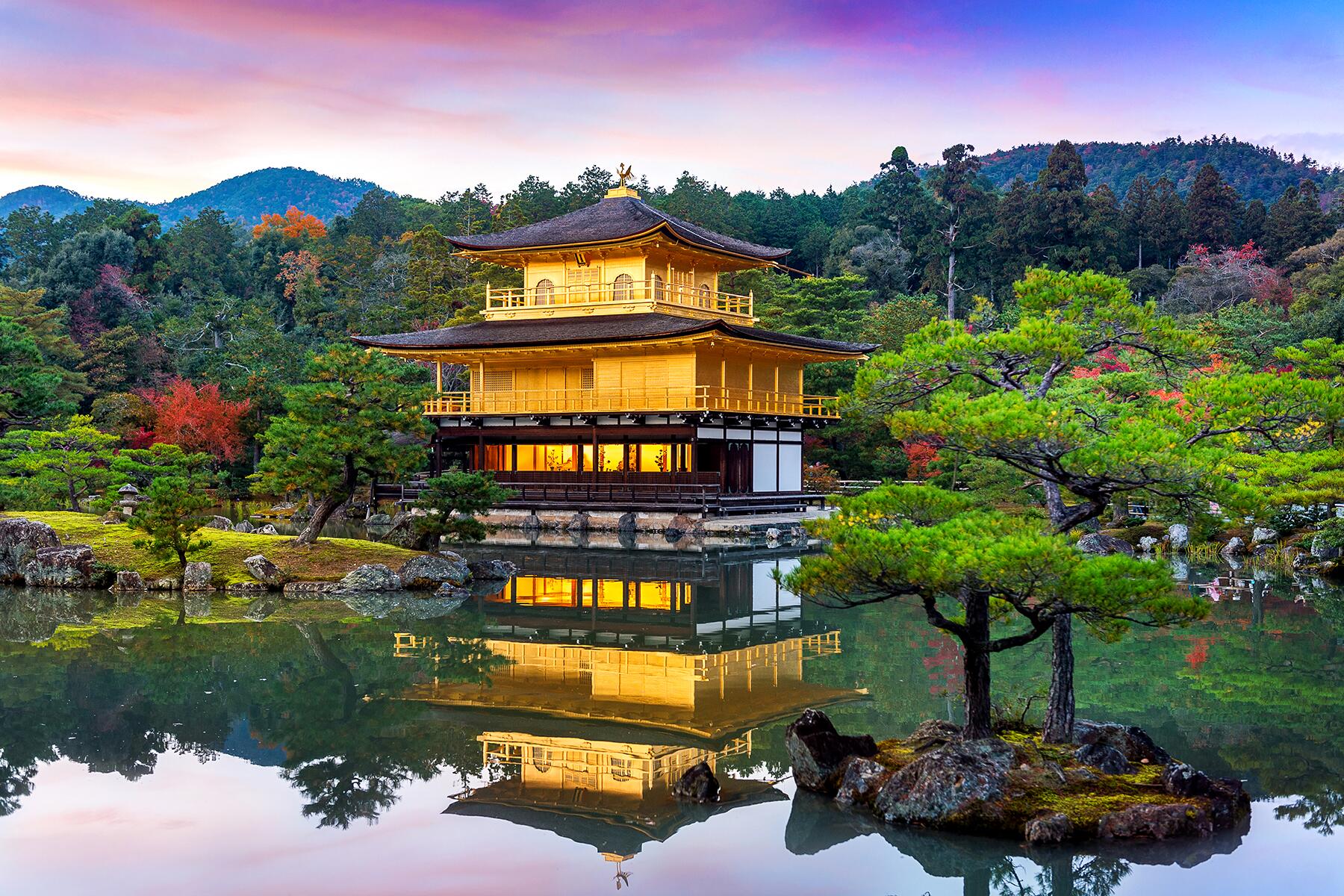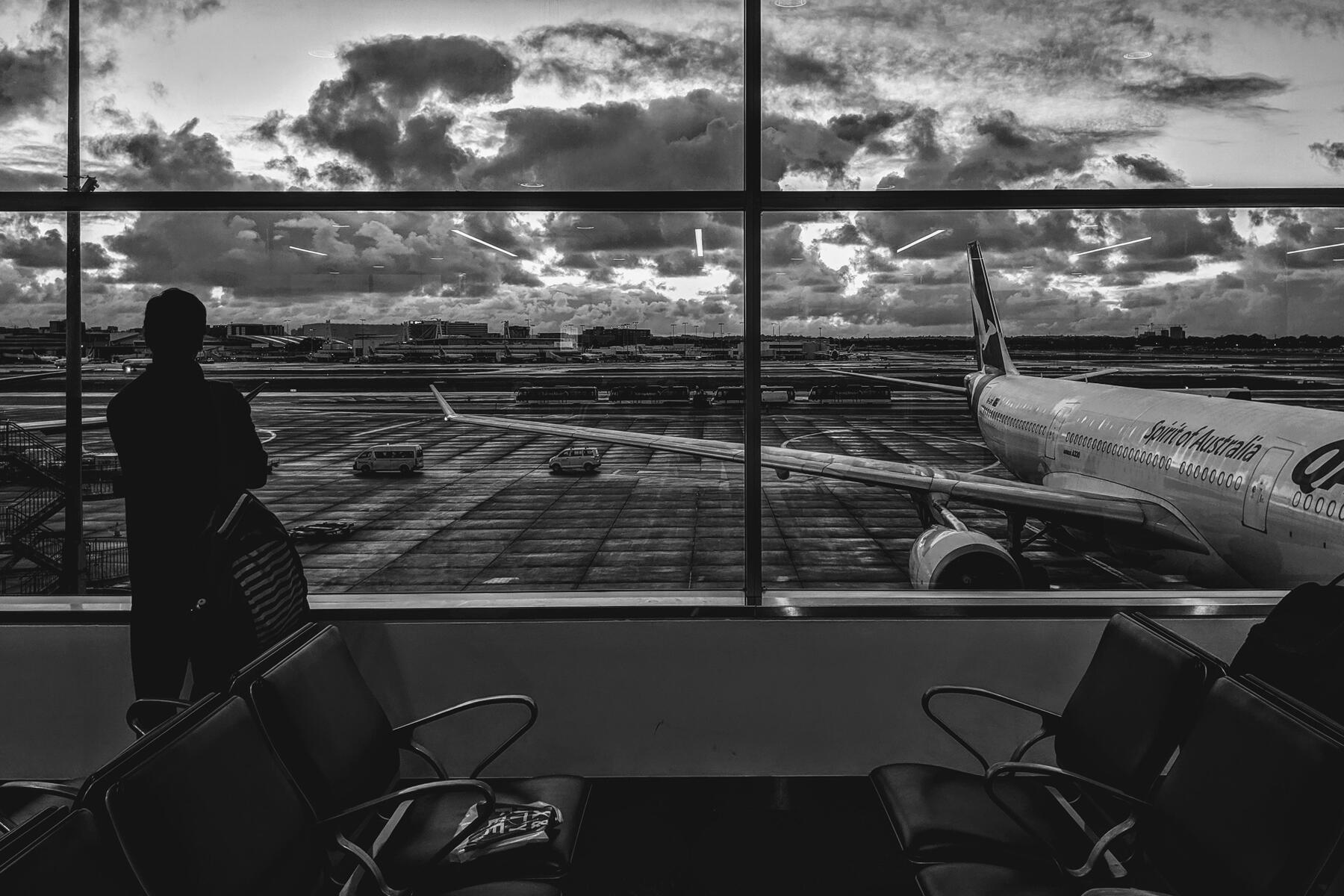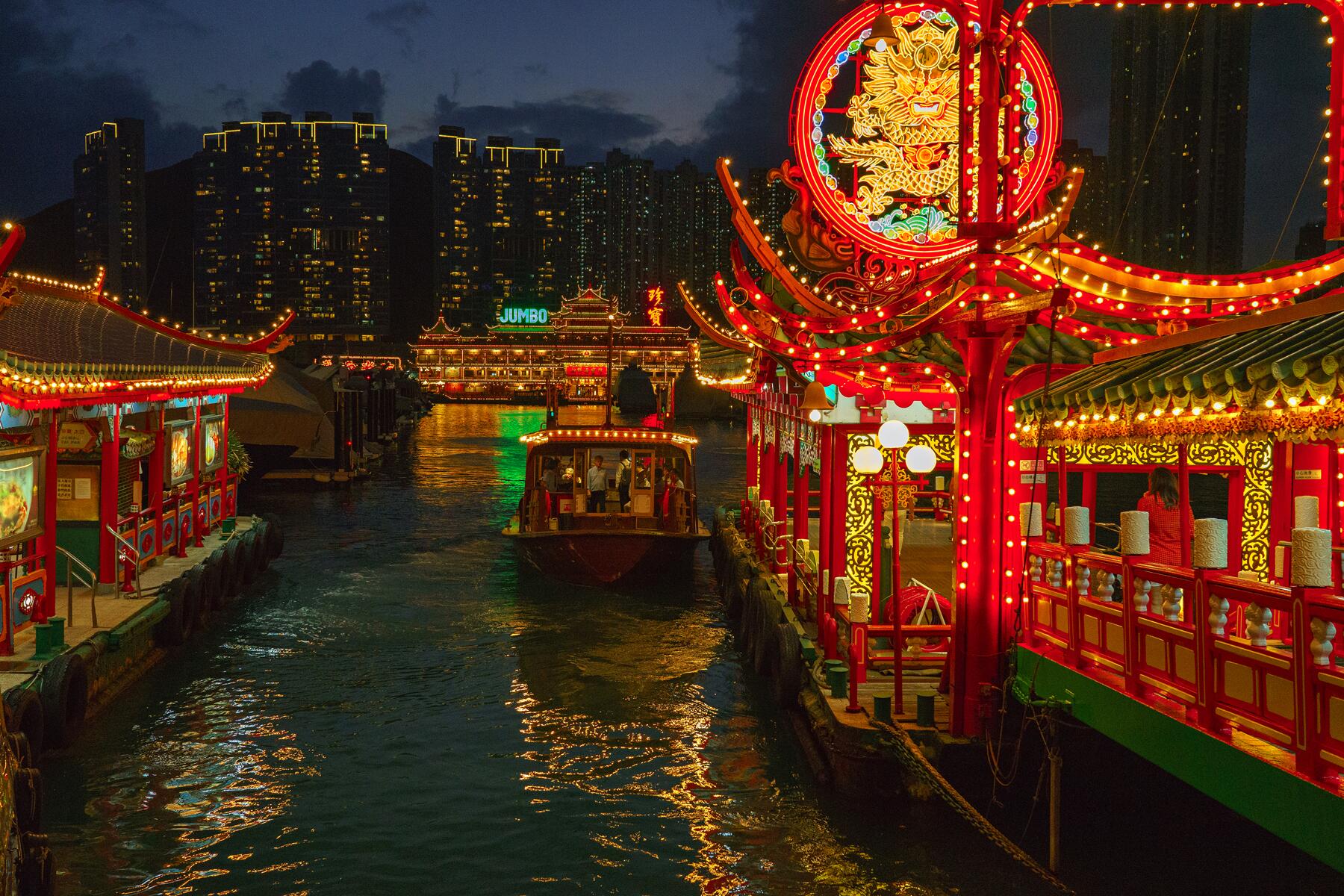First it was large cities (we’re looking at you, New York City and Chicago!) unveiling outdoor igloos for noshing and imbibing. That was a few winters ago.
With the pandemic, suddenly every bar and restaurant wishing to combat strict capacity restrictions and concerns about catching COVID-19 has popped up a dome (or mini glass-enclosed greenhouse) in its outdoor space.
For people who miss clinking wine glasses with friends or taking the fam out to eat, booking a spot inside of these can be tempting.
But are they safe?
We talked to a public-health expert, a restaurant association in the Midwest, and a consultant for New York City’s restaurants to get their takes. Dr. Jan Carney, Professor of Medicine & Associate Dean for Public Health and Health Policy at the Larner College of Medicine at the University of Vermont, says it best about why we are attracted to this new form of drinking and dining: “Everyone has COVID fatigue and we also want to support our community.”
If you’re lured in by the super-soft sheepskin throws, indoor heat source, and that you’re on full display (thanks to translucent walls) as you sip or dine—with your household, bubble, or pod, to be safest—research what exactly you’re entering into. This is especially important because many of these are marketed as high-end experiences and require a reservation as well as cost hundreds of dollars. Failure to understand what the experience entails may result in leaving this non-refundable money on the table.
Recommended Fodor’s Video
“[People] should not be shy to call up and ask if the tables are clean and [if] the spaces are cleaned between customers,” says Leon Lubarsky, of Letter Grade Consulting in New York City, whose clients include restaurants. “Most of the igloos I see are not in compliance. If it’s completely enclosed, it’s no longer considered outdoor dining.” Working with restaurants to be compliant during COVID-19 inspired Letter Grade Consulting to launch a sister company called Safe Disinfection Solutions.
What does “completely enclosed” mean? Basically, a lack of fresh air cycling in. “Outdoor dining in New York City requires that any structure has at least two sides open. Otherwise, there’s not proper ventilation,” says Lubarsky. COVID-19 is known to spread two ways, he says: “One is through the air and one is from surfaces. The surfaces can easily be cleaned but the air needs to move.”
“Most of the igloos I see are not in compliance. If it’s completely enclosed, it’s no longer considered outdoor dining.”
Dr. Carney agrees. “There really needs to be some ventilation in the units themselves, something that is helping the fresh air circulate and having an air exchange,” she says.
Shy about picking up the phone? Check out the restaurant’s or bar’s social media or Facebook page. The Wisconsin Restaurant Association, like many restaurant associations, encourages eateries “to publicize their policies, so their guests know what they are doing,” says the association’s vice president, Susan Quam. Even less obtrusive is a drive-by. If the structures are on a city sidewalk, it’s as easy as walking past.
An industry-wide suggestion, says Quam, is to allow for 30 minutes between reservations “so there’s not only time to clean but for the air to escape,” she says. “[Structures] should be treated like you would indoors, with proper spacing between tables.”
Dr. Carney suggests following three principles (listed below) just as you would with any other activity during the pandemic, and she reminds us that between 50% and 60% of the COVID-19 spread is due to asymptomatic carriers. Many people don’t even know they have the virus and still spreading to others.
Wear a Mask
“We know that masks are highly effective in reducing disease spread,” Dr. Carney says. While masks might be optional inside the structure as you’re with your family, household, pod or bubble, they should be worn when walking to and from the structure, including using the restroom or accessing the establishment’s entrance or exit. Wisconsin Restaurant Association also advises its restaurants to ask guests to “mask up” when approached by waitstaff, especially inside a structure.
Socially Distance
Dine or drink outdoors with just one or two other people and far away from others. If you see a bunch of igloos or greenhouses clustered together, this is not socially distancing, says Carney, because “you’re coming into contact with other people” when you enter or exit.
Know COVID-19 Risks
“Is there a lot of disease around me?” is a question Carney suggests asking yourself. If positivity rates are rising, it may be best to stay home or switch to curbside carryout which is, she says, “clearly the safest.” Also consider whether or not you have a high-risk health condition that, should you catch the virus, would make it difficult to recover.
Lubarsky couldn’t agree more. “People need to weigh the risks versus whatever benefit they’re getting by dining in an igloo,” he says.



